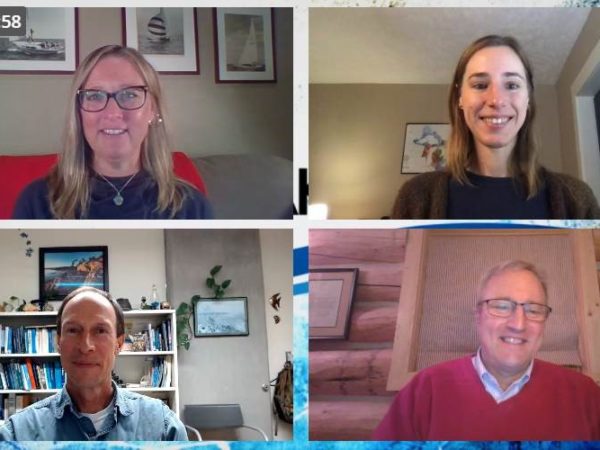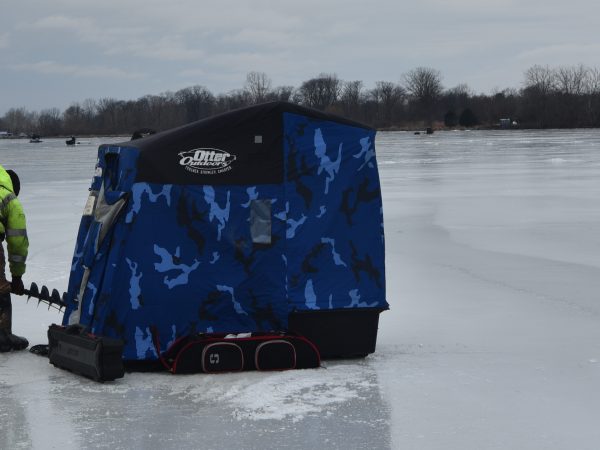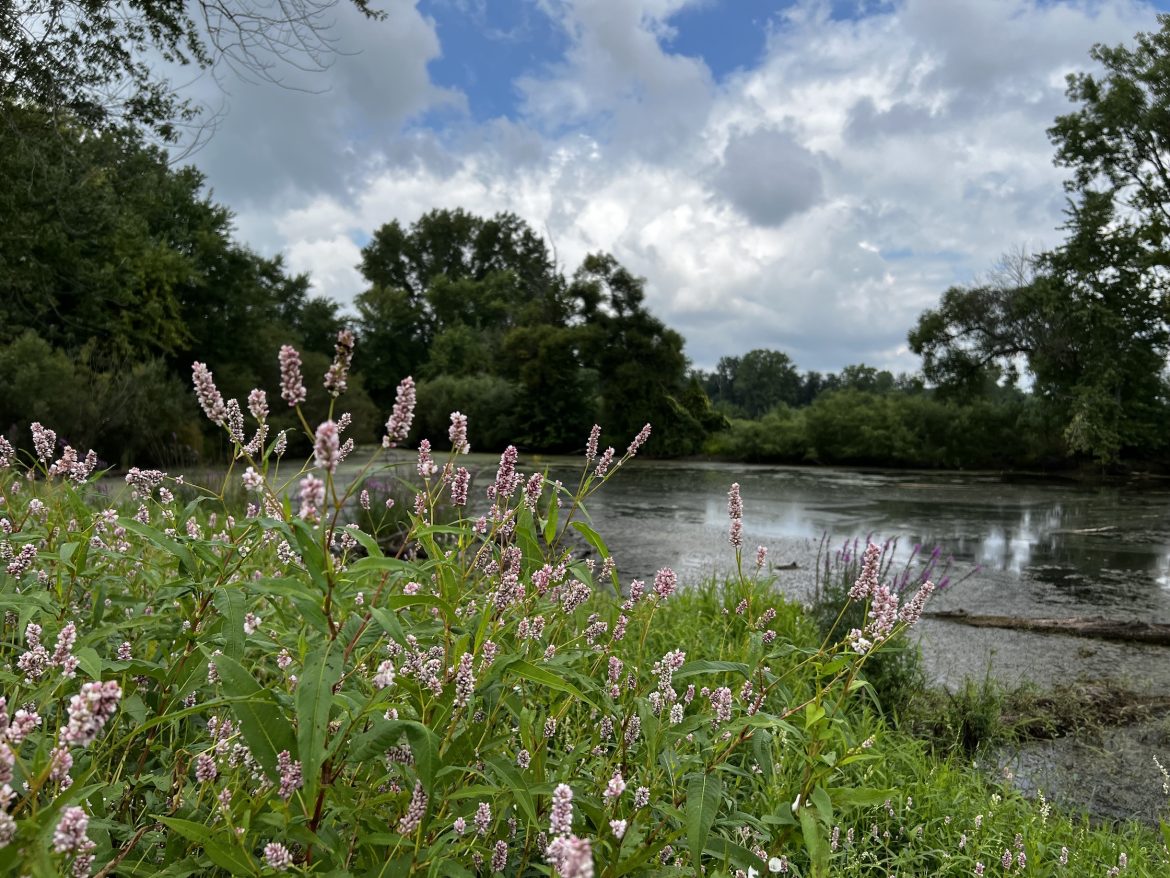
This article was republished here with permission from Great Lakes Echo.
By Kayla Nelsen, Great Lakes Echo
About 250 acres of Indiana wetlands have been lost in the two years since wetland protections were eased, according to the Hoosier Environmental Council.
Since the 2021 law passed, mitigation requirements have decreased. And Magnolia Land Partners, a private company that helps farmers restore wetlands, has lost business.
“Not only do we lose a lot of potential wetland sites that need mitigation from a business standpoint, but that’s also a huge loss from a restoration standpoint because the ecological value is essentially cut by more than half in the state of Indiana,” said Nikki Palella, Magnolia’s environmental market analyst.
Essential for balancing drainage and water storage, wetlands once were about 25 percent of Indiana’s landscape. About 85 percent of those have since been drained, mostly to make way for farming and development.
Wetlands are an economic asset. The Indiana Department of Natural Resources estimates that one acre of wetland annually provides $248 in water purification, $2,270 in water storage, $1,055 in erosion prevention and nitrate removal equivalent to that found in runoff from 100 acres of cropland.
Wetland protection policies vary within the eight Great Lakes states. According to a 2023 Earth Justice report, Indiana has moderately protective laws that still put wetlands at risk. In the report, Illinois’ laws ranked the weakest and New York and Minnesota’s ranked the strongest in the region.
“The Midwest is a water-rich environment and as the climate changes, that’s going to be a positive,” said John Ketzenberger, director of government relations of The Nature Conservancy’s Indiana chapter.
“There are a lot of places in the country where there isn’t adequate water for survival,” Ketzenberger said. “Now’s the time for good public policy that supports water quantity and water quality.”
Cutting costs
Indiana environmental legislation protects a narrow scope of wetlands. The 2021 law repealed wetland protections from 2005 by loosening the permit requirements for developers.
Over 8,000 acres of wetlands exist in Indiana without any protection now, Ketzenberger said. “That’s not a good thing. These wetlands perform an important function on the landscape and if you lose them, they’re gone.”
Indiana mandates a wetland classification system developed in a 2005 U.S. Supreme Court case: Class I are areas where people disturbed half of the wetland. Class II areas are isolated and support moderate habitat or hydrological functions. Class III are isolated areas that are minimally or completely undisturbed, including rare wetland types, like acid bogs.
“This 2021 bill has eliminated Class I protection, reduced it for Class II and essentially left it intact for Class III,” Ketzenberger said.
A bill moving Class III wetlands down to Class II advanced through the state Senate recently. It would, further reduce wetland protections, allowing developers to avoid costly permitting and mitigation.
“We look at any rule or regulation and what its impact is going to be on housing affordability across the state of Indiana,” said Rick Wajda, chief executive officer of the Indiana Builders Association that supported the legislation. “On a national level, we know that roughly 24 percent of the cost of the house is due to regulations at the local, state and federal level.”
When developers choose to build on land that requires permitting to jump protections, the cost per acre to develop that land increases.
“Across all areas of the government, there are ways that we can reduce those regulatory costs and burdens on potential homebuyers to allow more Hoosiers to be able to afford a new home,” Wajda said.
Balancing act
Ketzenberger said that the 2021 regulatory loosening displays a lack of understanding of the value of wetlands.
“Those previous protections are under attack now,” Ketzenberger said. “The legislature now has less regard for wetlands than it did in 2005 and I don’t see that changing any time soon.”
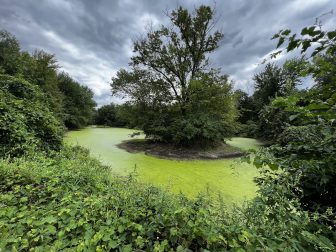
This wetland in Indiana’s Starke County is an offshoot of the Kankakee River that has been separated from its water flow. Image: Madelyn McFarland/Ducks Unlimited.
This wetland in Indiana’s Starke County is an offshoot of the Kankakee River that has been separated from its water flow. Image: Madelyn McFarland/Ducks Unlimited.
Instead of protecting wetlands of every type and classification, Wajda said that wetland regulation in Indiana should focus on conserving high-class wetlands.
“Most of the discussion in Indiana has been around these small wet spots in a farm field,” Wajda said. “These isolated, lower quality wetlands have been very costly to work around and are probably not providing as much benefit in terms of water storage.”
The business organization is collaborating with the Indiana Department of Environmental Management and wetland consultants to improve wetland programs across Indiana, Wajda said.
“The very high-quality wetlands, those are the wetlands we should be trying to avoid and put on a pedestal,” Wajda said. “They’re going to control more flooding on site than small, isolated wetlands are. Protecting those high-quality ones but allowing for economic development and growth in other areas is a better solution for Indiana.”
Buying to preserve
Ducks Unlimited has a different approach.
The wetland advocacy organization purchases Indiana properties to restore then transfers ownership to state agencies, like the Department of Natural Resources.
“We’ve conserved almost 85,000 acres in Indiana and invested almost $20 million, so I think the future of conservation in Indiana is still pretty bright,” said Joe Genzel, communications coordinator for the group’s Great Lakes Atlantic region.
In September 2022, the group purchased 267 acres along the Kankakee River in Starke County and is now transferring ownership to the Department of Natural Resources.
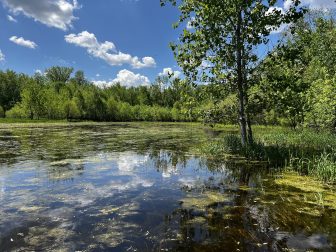
Ducks Unlimited works to restore wetland areas throughout Indiana. The most recent restoration site is in Starke County along the Kankakee River. Image: Madelyn McFarland/Ducks Unlimited.
Ducks Unlimited works to restore wetland areas throughout Indiana. The most recent restoration site is in Starke County along the Kankakee River. Image: Madelyn McFarland/Ducks Unlimited.
Magnolia’s agriculture banking program offers “mitigation credits” farmers can purchase when their land development is in a wetland area. When Magnolia restores a wetland area on another farmland in Indiana, that area becomes a credit available on the market for agricultural producers.
“The goal is to have no net loss of wetland habitat,” Palella said.
The company’s banking program is funded by a $690,000 grant from the United States Department of Agriculture and Natural Resources Conservation Service.
The program helps farmers stay within wetland protections and be eligible for USDA programs, like crop and flooding insurance.
“Typically what farmers find us for is because they’re in trouble with the government because they’ve filled a wetland that’s protected under federal law,” Palella said. “They legally have to mitigate.”
The program operates in Indiana, Nebraska and Illinois. The stipulation is that the restored site must be ecologically comparable to the purchasing farmer’s developed wetland site so the impact matches the gain of habitat.
The company is still in the preliminary stages of wetland mitigation projects in Indiana, but Palella said she hopes that will change within a year.
Catch more news at Great Lakes Now:
Featured image: This restored Indiana wetland is a habitat for flowers like pinkweed. Image: Madelyn McFarland/Ducks Unlimited.


